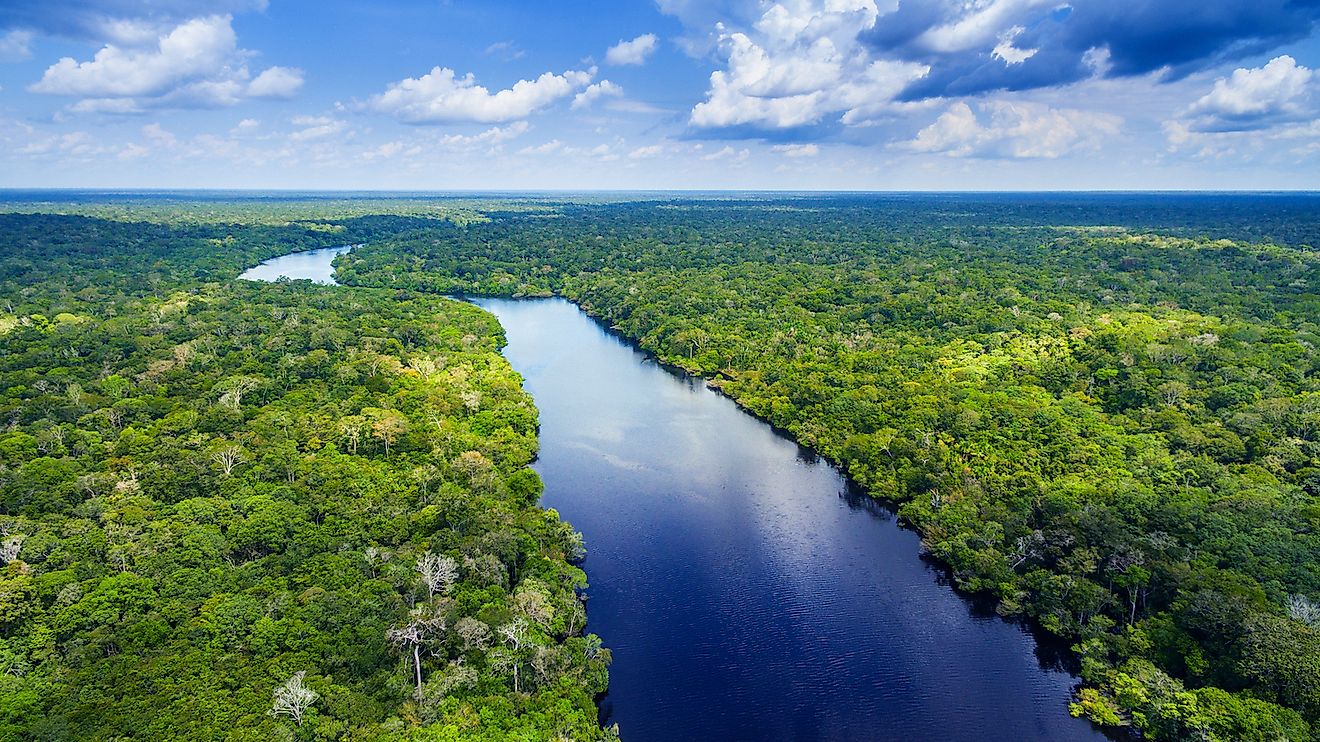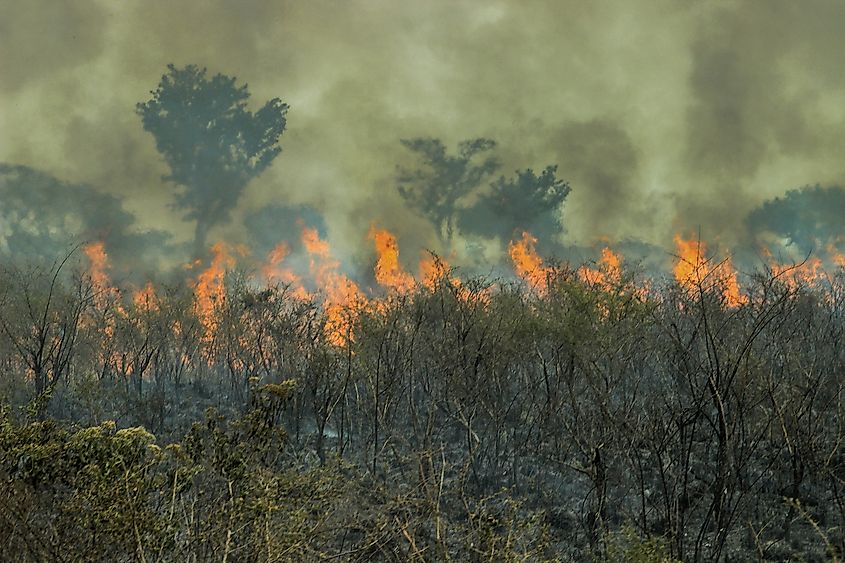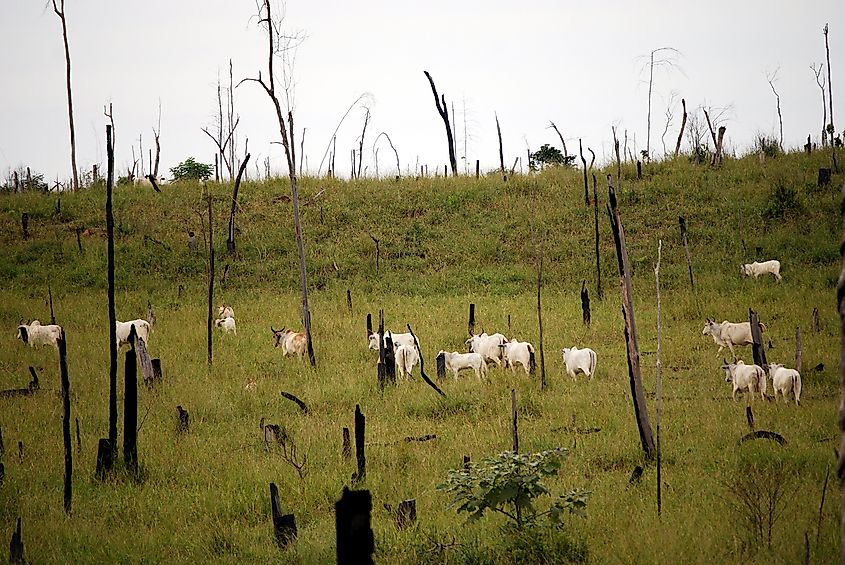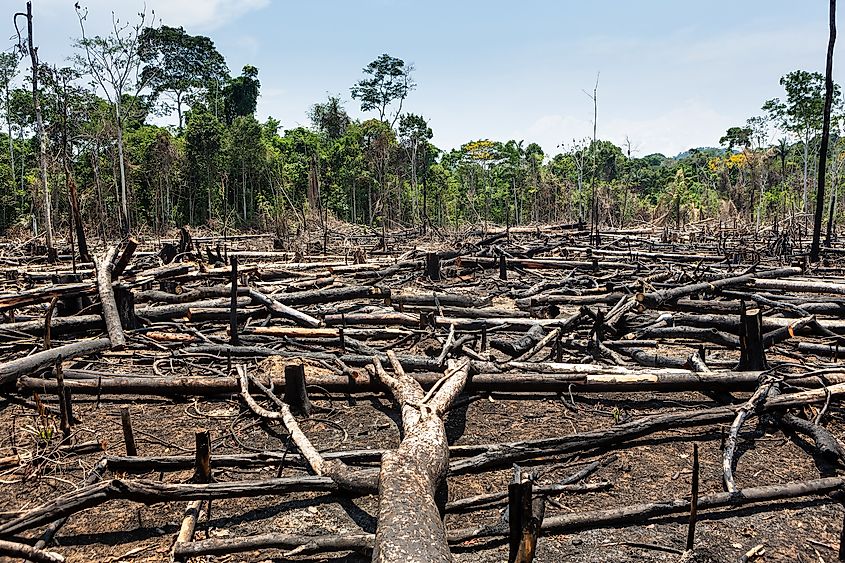How Much Of The Amazon Rainforest Is Left?

- The Amazon Rainforest is often considered "The Lungs Of The Earth". However, around 17%-20% of the Amazon rainforest has already been lost due to deforestation in the past 50 years.
- It is estimated that 80% of amazon rainforest deforestation is done to provide land for cattle ranching.
- Buying local food and limiting meat consumption, especially beef, would lessen the profitability of ranching in the area. If deforestation proved no longer profitable, there would be less incentive to destroy the land and adjoining ecosystem.
The Amazon rainforest it utterly majestic. Teeming with staggering biodiversity and natural resources, it's sobering to think of the current state of this ancient natural wonder. While it may be a sombre topic to discuss the amount of rainforest we have already lost, there is always hope to be found in the ecological and environmental advancements being made to conserve what remains.
Where Is The Amazon Rainforest?
The Amazon rainforest is a lush and vibrant tropical forest, known for its plethora of life and its well-established trees with wide broad leaves. A tropical forest, the region has steadily warm temperatures year-round that can support vast plant growth. The Amazon rainforest is located in South America, having developed near the basin of the Amazon river. It is fed by rivers in the north of South America. Brazil is home to much of the Amazon- in fact, about 40% of Brazil's total area is occupied by the Amazon rainforest.
How Big Is The Amazon Rainforest?
Cushioned by the Amazon River, the Amazon neighbours the Andes Mountains and the Guiana Highlands, and is near the Brazilian plate, spanning across a large portion of South America. It Amazon River into the Atlantic ocean and its basin spans roughly 2,300,00 square miles (that's around 6,000,000 square km). The Amazon rainforest is home to incredible biodiversity, including an estimated 10% of all life on earth. We much thank the rainforest for things like rosewood, palm, brazil nuts, mahogany and Amazonian cedar. The Amazon rainforest is sometimes called the worlds' "lungs" as it is responsible for producing around 20% of the planet's oxygen.
How Much Of The Rainforest Has Been Lost?
Brazil experienced a tremendous growth period in the 20th century. This massive growth led to the settling of parts of the country. Unfortunately, this meant encroachment into the Amazon. Large expanses of the Amazon rainforest were cleared. Since 60% of the Amazon rainforest resides within Brazil's borders, the size of the rainforest decreased dramatically during the country's development. Around 17%-20% of the Amazon rainforest has already been lost due to deforestation in the past 50 years.
Factors Destroying The Amazon

The Amazon rainforest is protected by international bodies as well as the Brazilian government. Sadly, the Amazon rainforest still continues to be lost rapidly. Many factors contribute to this, including illegal deforestation due to fires, exploitation of forest resources, and human encroachment. Tragically, around 75,000 fires occurred in Brazil's Amazon during early 2019. Must of this loss was politically motivated due to pressures for mass tree clearing.
Another major factor is resource exploitation. The amazon rainforest is home to exceptionally rich natural resources, including lumber, mining, and land capable of supporting cattle, and other cash crops. The sheer economical potential in clearing the land to convert it to use for profit is a highly motivating (although short-sighted) prospect.
Finally, it is estimated that 80% of amazon rainforest deforestation is done to provide land for cattle ranching.
Can The Amazon Be Revived Again?
It is shocking to hear about the depletion of the Amazon, but there is cause for hope. Research suggests that certain aspects of the rainforest could regenerate in as little as 65 years- a surprisingly quick bounce-back when considering the life span of the forest as a whole. The landscape that is crucial to rebuilding the long-established forest growth, however, is not so easy to repair. There are concerns that the breakdown of soil, land erosion, destruction of habitats and symbiotic ecosystems, could take as much as 4,000 years to properly regrow and replenish.

Since a major factor in Amazon deforestation is space being cleared for cattle, there are small steps the individual can take to help ease the pressures currently facing the Amazon. Buying local food and limiting meat consumption, especially beef, would lessen the profitability of ranching in the area. If deforestation proved no longer profitable, there would be less incentive to destroy the land and adjoining ecosystem.
Outside of moving to a more plant-based diet, there are other things an individual can do to help conserve and protect the Amazon. Researching products that are sustainable, and avoid Amazon-destroying practices can reduce the impact of deforestation. Donating or funding to support conservation of an acre of rainforest can protect the land itself. You can also support local communities working towards conservation efforts by supporting or donating to Amazon Watch. Finally, do not forget the power of the individual voice- keeping an active conversation of the state of the Amazon keeps the issues in the public light.
The World Cannot Afford The Loss

The Amazon, the "Lungs of the Earth", and one of the most biologically lush and diverse areas on the planet is in real, active danger of being lost forever. Once the Amazon has been lost, it will take thousands of years to regrow- if it is capable of regrowing at all. The aftermath of the destruction of the Amazon, including the loss of land, resources, biodiversity and plant and animal life, may affect humanity and the world at large for hundreds, if not thousands of years into the future. We have the power to change such destruction, and possibly even reverse it. Now is the time for humanity to stand together on issues of world ecology- before it is too late.











